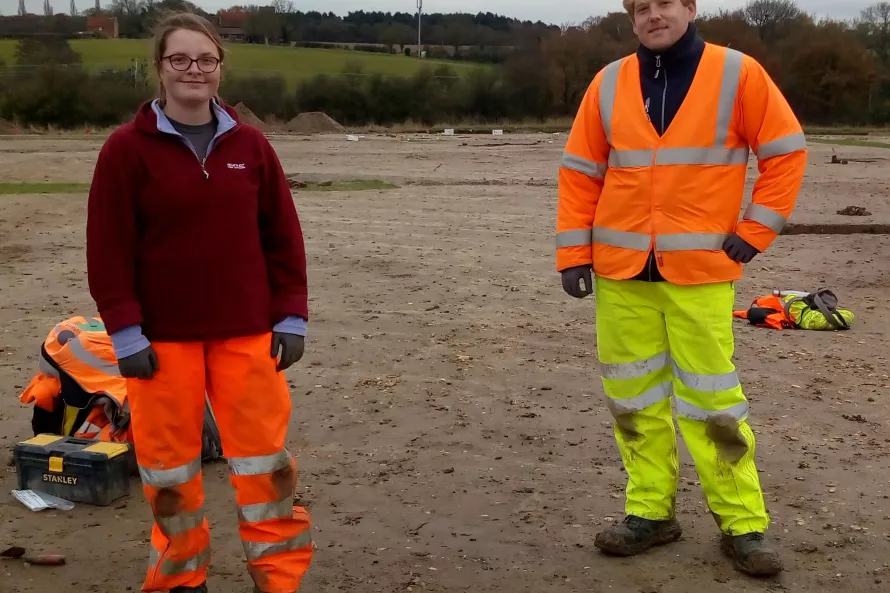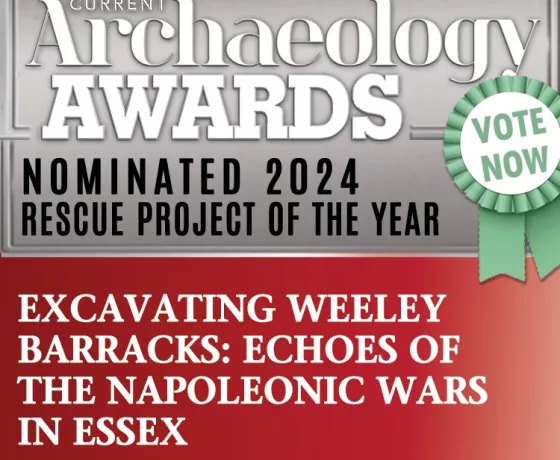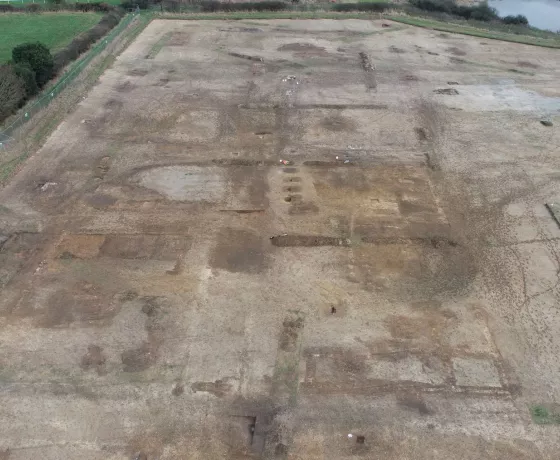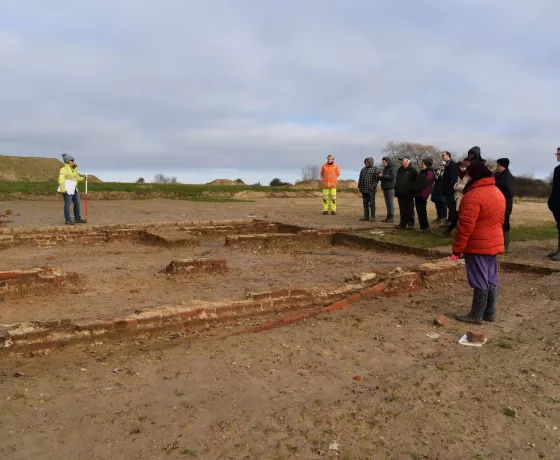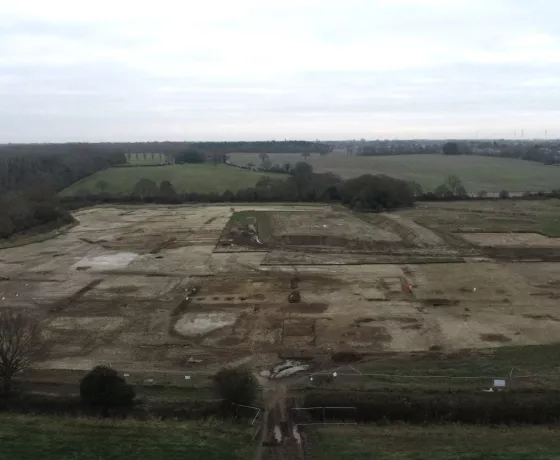Today sees Chris, one of our archaeologists on the site at Weeley, take over for the day to give you the lowdown on what it's really like to be an archaeologist.
"The day begins with a 6:20am alarm that awakens me from the comfort of my Harwich accommodation. I gaze blurry eyed out of the window over the seafront and wonder what the weather has in store for me that day. After a quick breakfast, I jump into the OA transit van and drive myself and two colleagues on the 25 minute journey from the warmth of our apartment to an open field in Weeley, in search of a Napoleonic Barracks. The journey, accompanied by the chatter of radio DJ’s who are far too jovial for the time of morning, sees us meandering down narrow country lanes and passing quaint sleepy villages, sparking my imagination into wondering whether those people who once occupied the barracks travelled this same route some 200 years earlier.
Through a farmers gate and past a barn or two we arrive at the compound for 8:00am. The view out to site is a idyllic one - welcomed by the early morning birdsong, lush green fields lined with hedgerows and a small parish church perched on top of a hill provide the perfect backdrop for an archaeological excavation. However, despite Weeley’s idyllic surroundings, the site is very exposed to the elements and each day we prepare ourselves for the unpredictability of the weather. Wearing multiple layers of clothing, we top it off with brightly coloured orange PPE and a pair of sturdy work boots. Once ready, we equip ourselves with a shovel, mattock, hoe and wheelbarrow, then march out to battle in search of a barracks buried beneath the mud.
After a short walk through the long wet grass, avoiding where possible the muddy tracks and boggy puddles left behind by the machines, who months earlier stripped away the topsoil to reveal the level where the archaeology may lie, we arrive on site. Our job is to continue with the previous days/weeks work or begin a new area of excavation marked by a red flag.
So far, the excavations on site have revealed numerous ditches, pits and structural remains linked to both the 19th century barracks and earlier prehistoric activity. My current area of excavation is a dark, circular feature, visible only after clearing away silt deposited by previous rainfall. After half-sectioning with a string line and removing multiple barrows of spoil with my mattock and shovel, the feature appears to be a pit, dug into a natural pebbly gravel and then backfilled with debris, likely from the demolition of the barracks. Whether the pit was in use whilst the barracks was in operation is unclear, but finds such as brick, ceramic roof tile, sherds of glazed pottery, a fragment of green glass and numerous rusty iron nails suggest its contents are likely associated with the sites former occupation. The scale of the pit, measuring upwards of 2 metres in diameter, is challenging my decision to come dressed ready for and artic expedition as I trundle back and forth barrowing away the mounds of spoil.
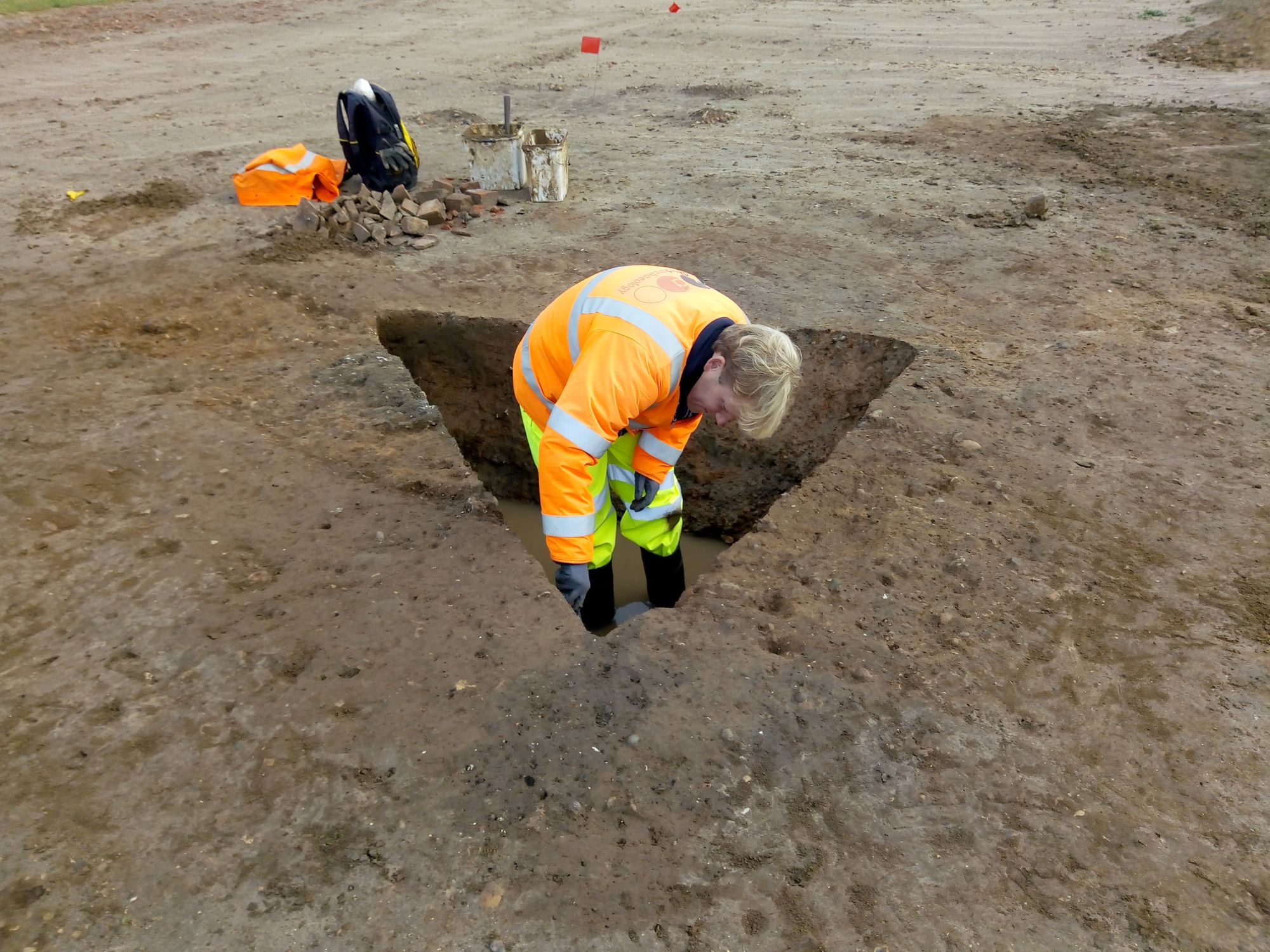
Despite reaching the water table, forcing me to replace my boots for a pair of wellies and continue in a vain attempt to reach the bottom, excavating the pit and uncovering its contents emphasises why I enjoy being an archaeologist. Finding artefacts lost and forgotten for hundreds, and in some cases thousands of years (an example being the large quantity of Iron Age pottery I discovered whilst cleaning round the edge of a structural beam-slot associated with the barracks), provides a unique sensation that is difficult to describe. For me, the times you question why you chose a career that requires you to work in a muddy field in the middle of winter evaporate when you make a direct connection with the past and those who once lived and worked in the place you’re standing. Whether through the objects they left behind, or the discovery of past human activity etched into the landscape, the feeling you experience makes the difficult and challenging times worth it. Not only that, there is a great sense of pride that as an archaeologist, you are contributing both to the historical record of a site for future generations, and enhancing a greater sense of place for local communities in the present, providing knowledge and understanding to a history that would otherwise become lost.
Break times at Weeley see us return to the van for a short rest, watching the starlings sat in a line on the electric cables and the occasional cat prowling the fence. With a final couple of hours work after lunch, the ending of the day is signalled by the daily passing of a late afternoon diesel train and the early setting of the winter sun. As light begins to fade, we stagger back once more to the compound, carrying our equipment and tired bodies through the long grass, leaving the barracks and mud behind us. PPE that started out bright has lost most of its shine after a hard days digging and is folded into the back of the van. As we drive out of the compound, past the farm and up through the villages on our way back to Harwich, I can’t help but wonder what archaeology will be waiting to be discovered tomorrow."
Other posts in this collection
Read our latest posts about the archaeological investigations at Weeley.

